JIZHOU WARE
Jizhou kilns were located in Yonghe town (永和镇) of Ji an (吉安县)county in central Jiangxi province. The kiln cluster, situated next to the Ganjiang river (赣江), occupied a stretch of about 10 km. Jizhou products could be transported along Ganjiang to Poyang lake (鄱阳湖) and from there it could access the Yangzi river which facilitated their distribution to various part of China and even overseas eastward by way of Ningbo (宁波).
Aerial view of Jizhou kiln sites

Remains of a dragon kiln in the Jizhou Yao Theme Park
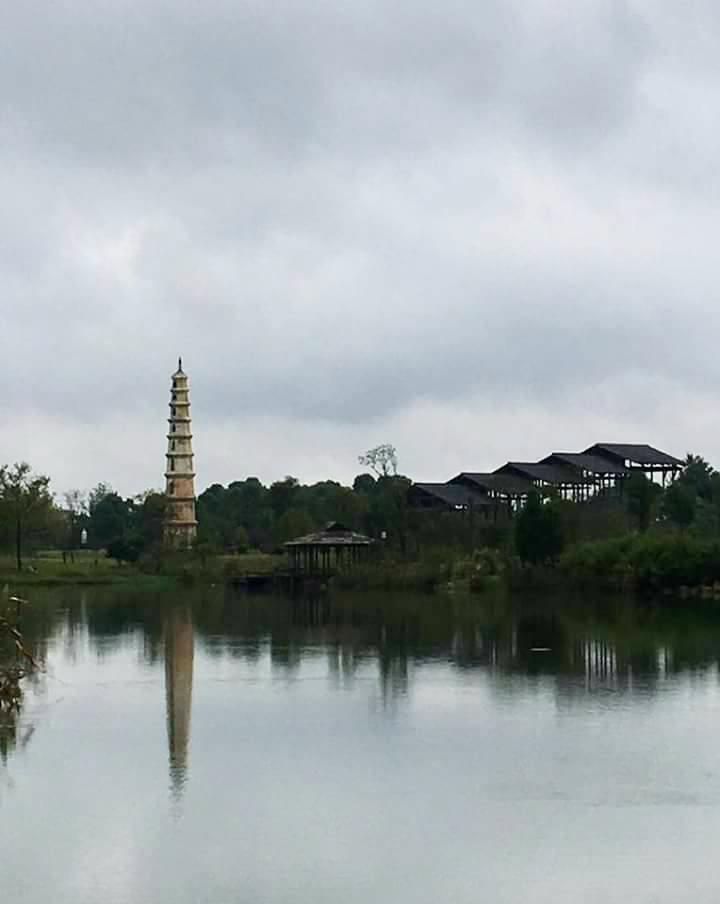
The scenic Jizhou Yao Theme Park
Contrary to ancient records which placed production of ceramics in Jizhou to Song period, archaeological digs and surveys revealed that Jizhou kilns started production from the Late Tang/5 Dynasties period. The earliest products consisted of mainly green, dark brownish and milky white glaze wares which shared common characteristics to those produced in other kilns in Jiangxi Province. The vessels consisted of mainly daily utensils such as ewers, dishes and bowls. The scale of production was small and essentially to cater to the need of the local community.
During Song Dynasty, Yonghe town was transformed into a famous and prosperous commercial centre mainly due to substantial demand for ceramics products produced by the Jizhou kilns. This was noted by the early Qing Scholar Fang Yi Zhi (方以智) in his writing “游永和记” in which he made the following comments "因窑立镇, 置监立云, 估商帆集,万烟骈填“. This is substantiated by archaeological findings which confirmed the large scale of ceramics production during the Song period. More specifically, it was during the Southern Song period that Yonghe kilns entered its golden period and emerged as an important ceramics production centre. The fall of Northern China to Jin army resulted in many northerners fleeing the region and settled in Southern China. Among them, some of the potters from Hebei and Henan may have settled in Yonghe. The Jizhou kilns likely benefitted from the transfer of ceramcics production technology. This influence is clearly seen in those wares with Cizhou iron-brown or Ding moulded decoration.
Jizhou potters also produced a highly popular range of ceramics products with distinctive glaze effect. Among them, tea bowls featured as the most important and production volume huge. During the Song period, tea drinking culture was widely promoted and tea became a daily necessity. Inevitably, it stimulated demand for vessels, especially bowls and ewers, required for drinking of tea. The early Jizhou tea bowl has plain blackish or brownish glaze which qualitatively pale compared to those produced in kilns from provinces such as Henan, Hebei or Fujian. The Jizhou kiln operators understood that to compete successfully beyond its locality, they would either need to produce wares that were of better quality or introduce new elements that would differentiate their products and create a niche market.
Song Jizhou wares with plain monochrome dark brown glaze

| Some Jizhou fragments collected from a kiln site while on a vist in Oct 2016 |
The creative Jizhou potters experimented and successfully introduced various decorative techniques to improve on the attractiveness of their black wares. The most famous of which essentially involved the manipulation of two layers of glaze. Basically the vessel is first glazed with a darker colour ground glaze. It is than further decorated with a lighter colour over-glaze which is sprinkled, trailed or painted on the ground glaze. On majority of the pieces, white milky patches could be seen on some part of the of the lighter colour glaze. The lighter over-glaze is rich in calcia and magnesia which produced a yellowish-milky opalescence and with further heating above 1260 degree centigrade become a rich transparent ambers. The main ingredients in these Jizhou over-glaze were probably wood ashes of some low-silica type.
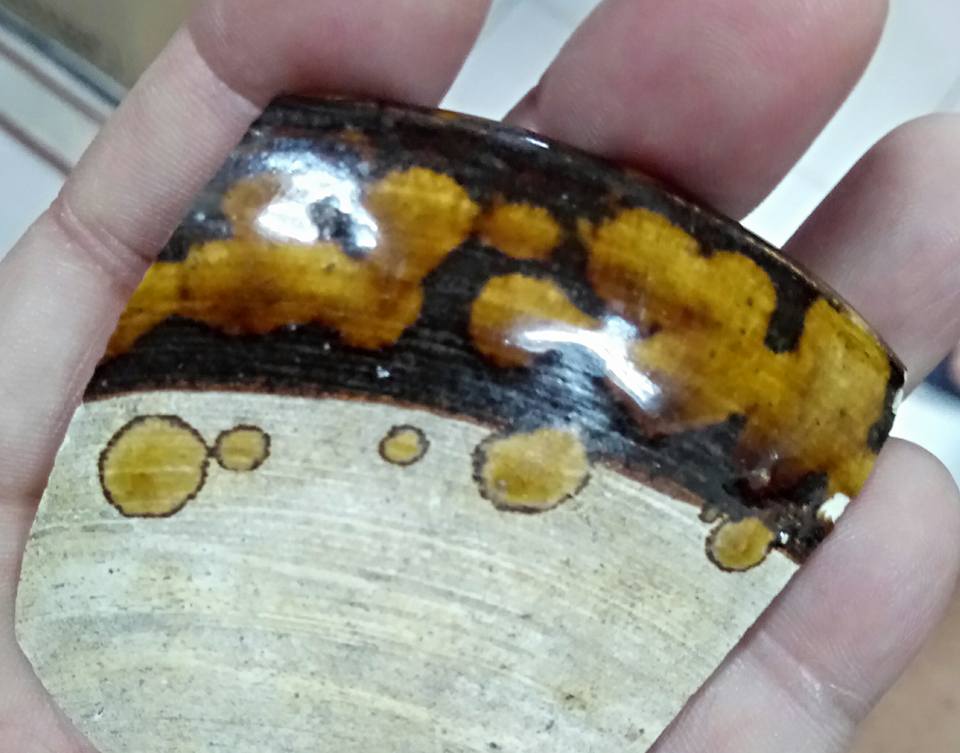
| The few accidental spots on the unglaze portion of the fragment is instructive. They reveal how the transmutational glaze looks like without the darker ground glaze. Visually it is affected by the darker ground glaze. |
 |
| Some examples of Jizhou tea bowls with interesting over glaze effect. The paste of Jizhou ware varies from a grayish white to a light biscuit colour. The typical foot of the bowl is shallow. |
 |
In fact, this is not a new decorative technique. In essence, it is similar to the overglaze milky bluish opalescent overglaze splashes found on the Late Tang/5 Dynasties Henan Lushan black ware. Scientific analysis revealed that such glaze composition consisted of lower alumina ranging from around 14 to 11 %. During the firing process, it induces a state termed liquid-liquid phase separation during cooling. The micro-structure of liquid-liquid phase separation glaze looks like caviar glass droplets which scattered light. In the case of Tang Jun, the glaze is generally under-fired and hence the droplets are larger and scatter white light. When firing temperature is higher, the droplets are smaller and through an interference effect termed Rayleigh Scattering, they scattered blue light which has shorter wavelength. Hence, the glaze appears to have a bluish cast. An analogy of this optical effect would be the blue sky and white cloud: the small particles in the atmosphere scattered blue light and the cloud with large vapour scattered white light. The below Lushan ewer and the Jizhou bowl show striking similarity of the overglaze milky bluish opalescent splashes.
Tang Lushan black glaze ewer with milky bluish opalescent splashes
|
|
|
| Song Jizhou bowl with white milky bluish opalescent splashes. The overgaze splashes of this bowl in Shanghai Museum is visually similar to that found on the Tang Lushan ewer |
But the source of
inspiration may not be from the Henan potters as archaeological findings showed
that such decorative technique was not known on Northern Song Henan ware.
There was an interlude before its re-appearance on Southern Song Jizhou ware. In
fact, such transmutational Jun-like glaze was not used exclusively by the
Henan potters. At least since the late Tang period, potters in
other provinces were known to use it for their ceramics products. For example, Changsha kilns also produced ware with Jun-like
milky glaze with oppalescent bluish streaks during the late Tang/5 Dynasty
period. An example showing the similarity of Jun like glaze from Changsha and
Henan kiln is shown below:
What is also interesting about the above Changsha piece is the variation of the
order of glazing as compared to the later Jizhou ware. In the Changsha example, it appears that
the transmutation glaze was used as the ground glaze and the brown and green
splashes were applied above.
There was continuity in the use of transmutational glaze in Hunan. Its use
was inherited by other Hunan kilns such as
those in Hengshan (衡山) and Xiang Xiang (湘乡) and widely used during Song/Yuan
period.
Song ewer with Jun-like glaze from Hunan Xiang Xiang
(湘乡)
kiln
Geographically, those kilns in Hunan Hengshan and Xiang are not far apart from
Ji an county. It is not inconceivable that the Jizhou potters learnt the
formula for transmutational glaze from Hunan.
However, the Jizhou potters took an approach
similar to the Henan Lushan potters and focused on the use of the
transmutational glaze as an overglaze
decorative element. They fully explored and developed its decorative
potentials and in the process developed a distinctive range of products which ensured its place in the history of ancient Chinese
ceramics art.
There is wide visual diversity in the overglaze effect but two of the most iconic of such products must be
those the Chinese called tortoise shell and tiger fur
effects. Tiger fur effect is distinguisable by its longer stripes. Visually it may have a dry moldy mottled quality if underfired.
In high fired pieces, it became more
transparent and glossy.
Ewer
with tiger fur effect in
Shanghai Museum
Vase with Tortoise shell effect in Jizhou museum
The Jizhou potters
further enlarged the repertoire of overglaze decorations by incorporating paper
cut stencil designs. The process involves firstly the application of a darker tone ground glaze.
This is followed by positioning the openwork stencil cut paper on the interior
of the bowl. A lighter overglaze glaze is then applied and the stencil removed
to
reveal a black design on a lighter colour background. Popular paper cut designs include plum blossom, floral spray, dragon and phoenix. There are also those with rhomboid patterns and 4 Chinese
characters such as fu shou kang ning (福寿康寧)
i.e. fortune, longevity, health and peace or chang ming fu gui (长命福贵)
i.e. long life and prosperity.
Example with the Chang Min Fu Gui
(长命富贵)characters A Song Jizhou shard with paper-cut flowers decoration. Click photo to view Video
clip
Another interesting variation is technically more simple. The papercut design is
poistioned on the biscuit vessel and then completed with application of layer of
black or dark
brown glaze. The stencil design is sometime further enhanced with
details carved or painted with iron brown slip. The final design is
usually left unglaze but there are also instances when it is covered with a transparent
glaze before firing.

Left late Tang/5
Dynasties Changsha bowl and right Yuan Jun ware. The bluish
streaks typical of Jun ware are apparent on both examples
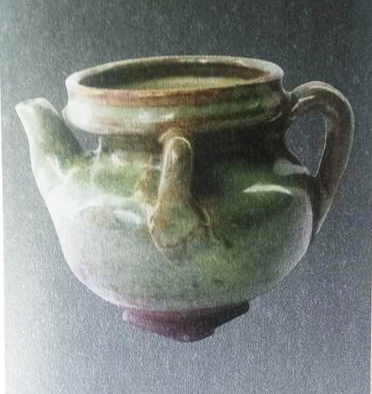
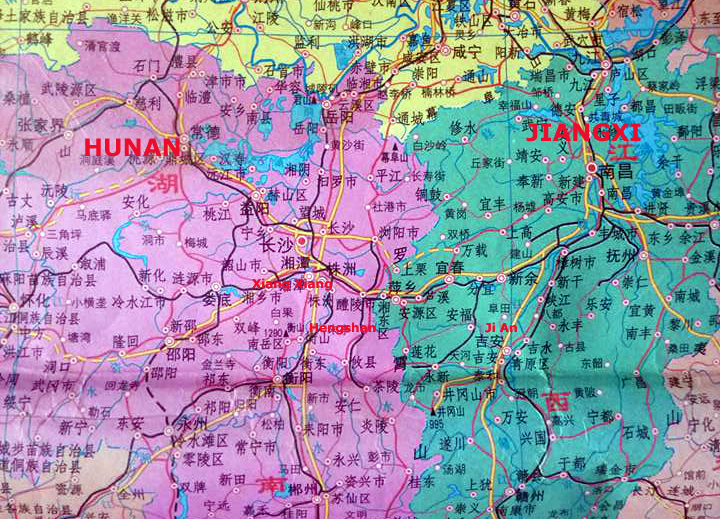


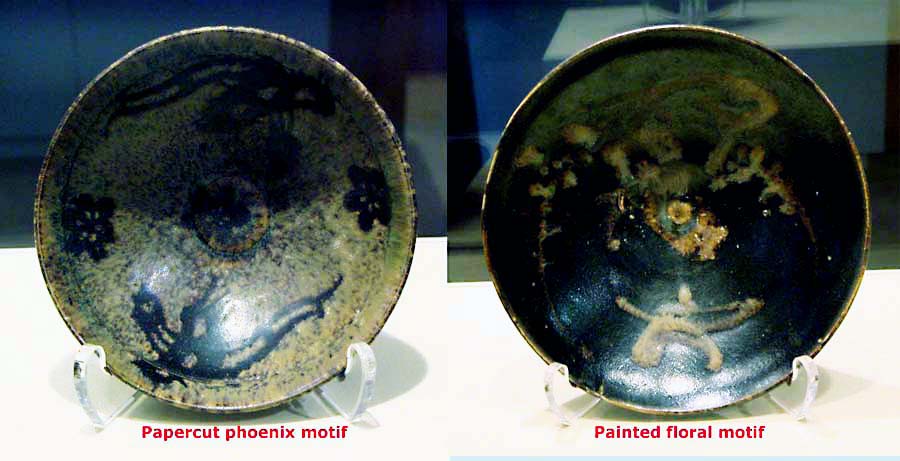
|
|
|
|
Example with paper cut stencil flower further enhanced with painted details and carved branches
|
|
| From a grave in Jiangxi Yichun city (宜春市) dated 5th year of Qingyuan reign, i.e. 1199 A.D. |
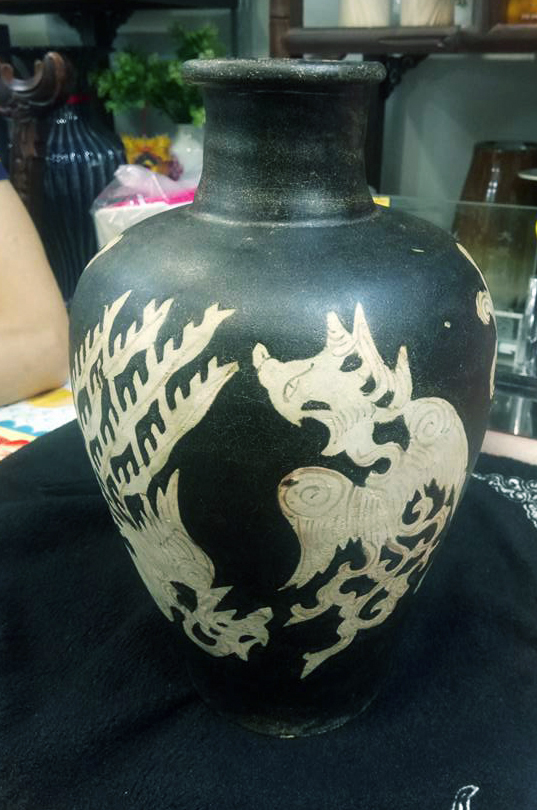
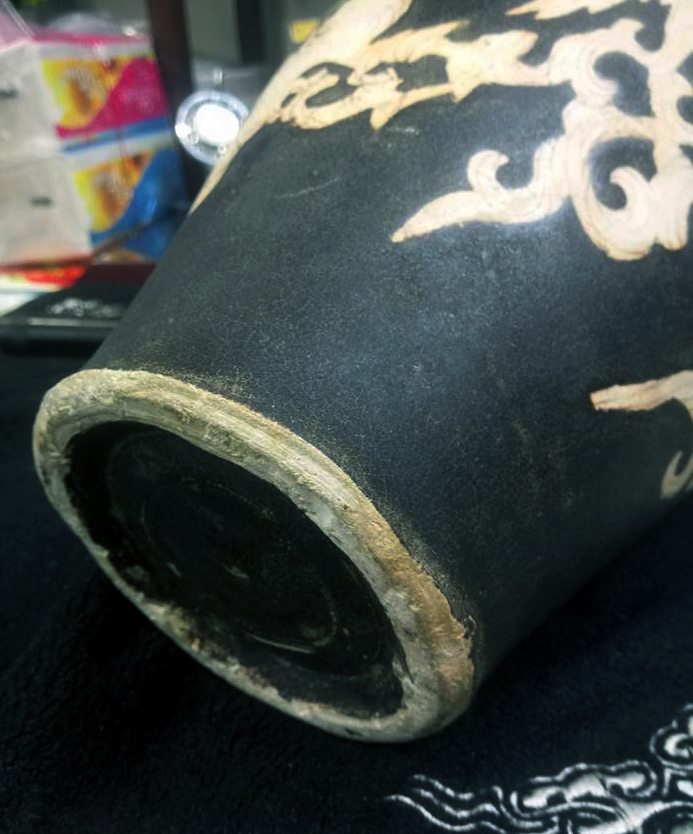
| Jizhou vase with paper cut pheonix design from a wreck found in Indonesian water. Not many Jizhou wares were known to be exported overseas. |
Another iconic Jizhou black glaze ware is that with naturalistic leaf decoration. Pre-rotted leaf numbered 1 to 3, sometime overlapping, were coated with a lighter colour glaze before positioned on the interior of a black glazed bowl.
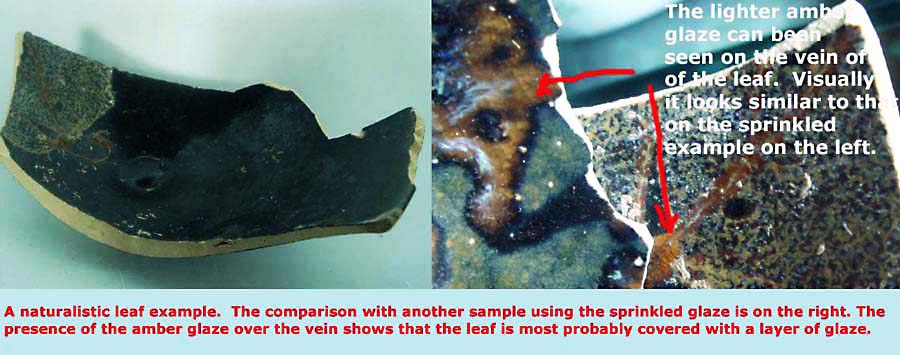
Bowl with leaf decoration in Jizhou Museum
|
| Click photo to view video clip |
As mentioned earlier, Jizhou kilns also produced a distinctive form of Cizhou type ware with under-glaze iron brown painted decoration from the Southern Song period. The key difference from that of Cizhou is that Jizhou version does not have a layer of white slip on the biscuit body. The painted motif sometime has incised details such as that found on the leaves and pheonix of the pillow below.
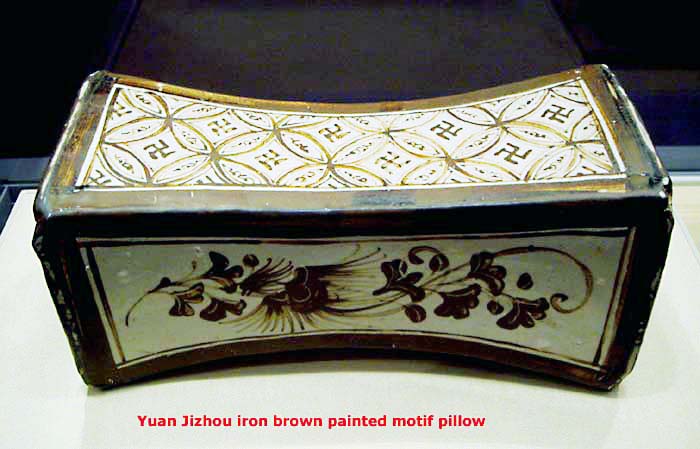
The earliest known examples of iron painted motif was a censer from a tomb in Nanchang and could be dated to A.D. 1209. Jizhou kilns suffered catastrophic devastation during the few years when it was a battle ground between the army of the famous patriotic Song Official Wen Tianxiang and the invading Yuan army. Ceramics production resumed subsequently but it did not regain its former glory. During the Yuan period, under-glaze painted wares became an important product of Jizhou kilns. Some Jizhou wares were found in the Sinan wreck.
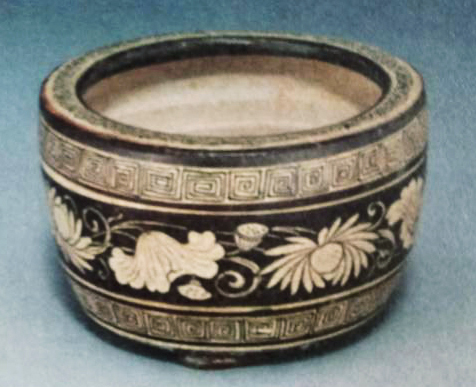 |
| White glaze censer with iron-brown painted floral decoration from a grave in Nanchang dated 2nd year of Jiading reign, i.e. 1209 A.D |
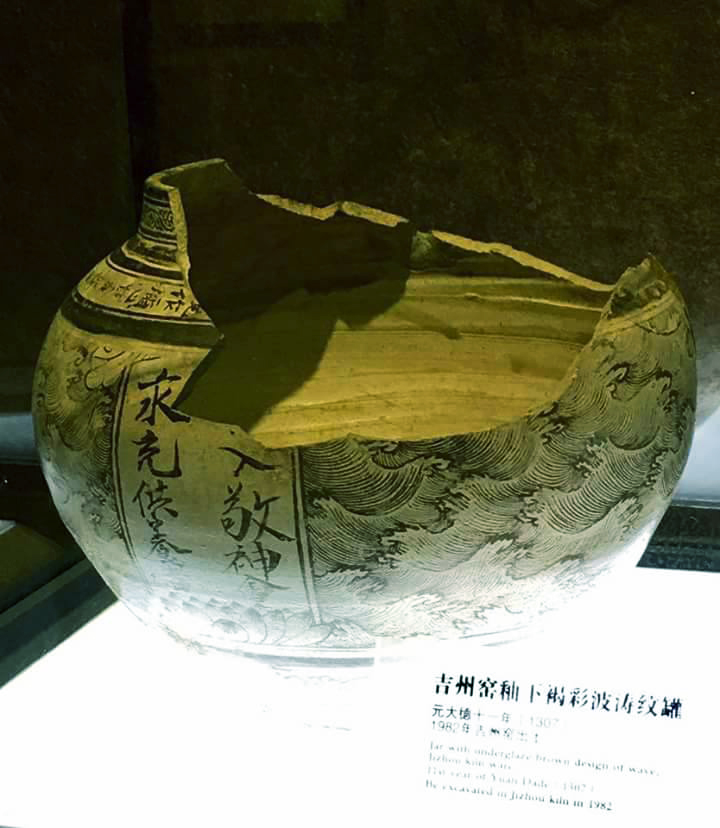
|
Jizhou iron-brown painted jar with a 11th year of Yuan Dade mark (i.e. 1307 A.D) |
| Yuan Jizhou iron-black painted jar with deer decoration in Jizhou Museum |
|
|
| Yuan vase with iron-brown painted waves motif. This probably features among one of the most recognisable form of Jizhou decoration |
|
Click photo to view video clip
Besides those white ware with iron-brown painted decoration, there were also white glaze wares with carved decoration. Significant number of vessels with Ding inspired moulded decoration were also produced. There were also wares coated with green lead glaze.
Jar with carved motif in Shanghai Museum
Song Jizhou green lead glaze pillow
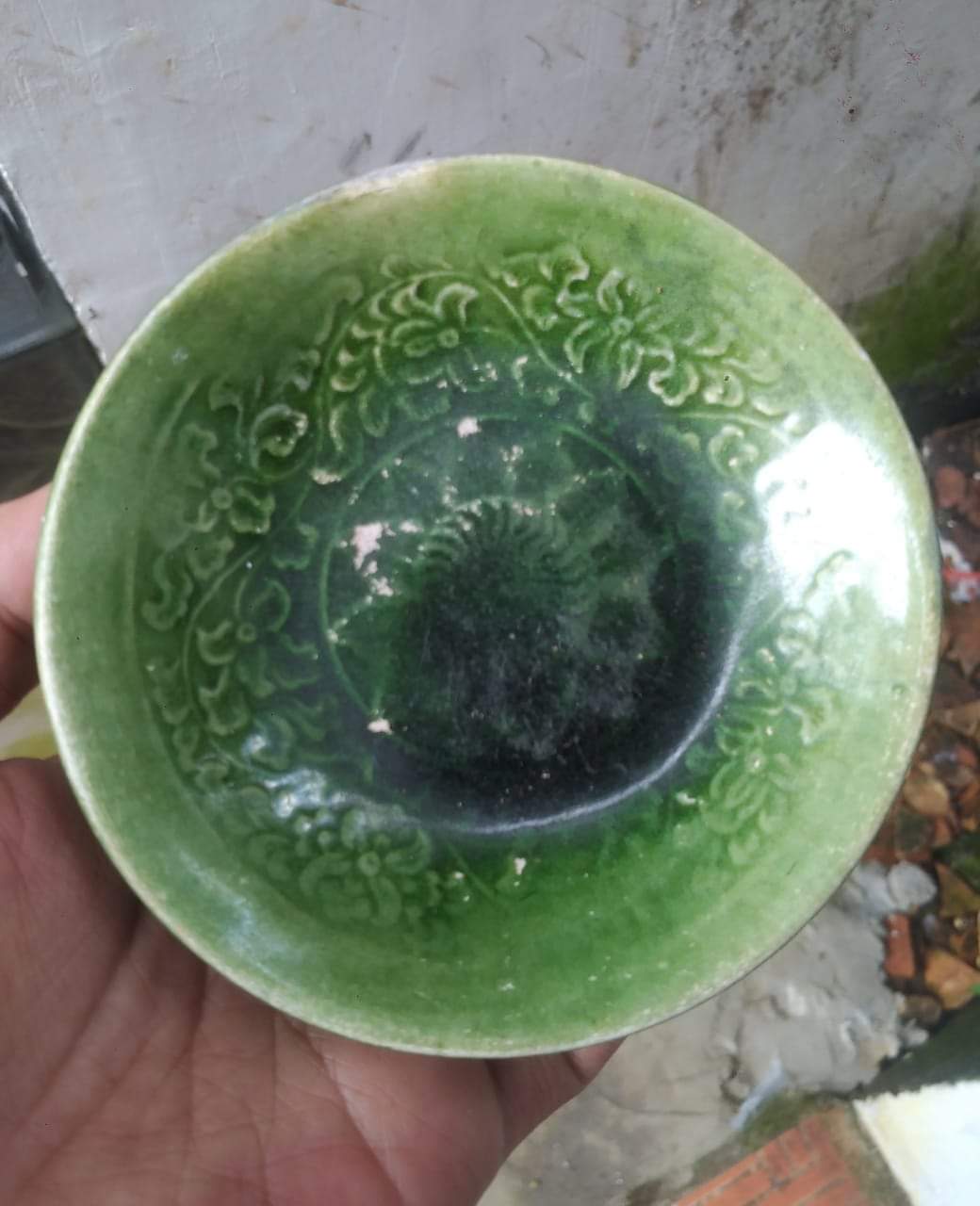 |
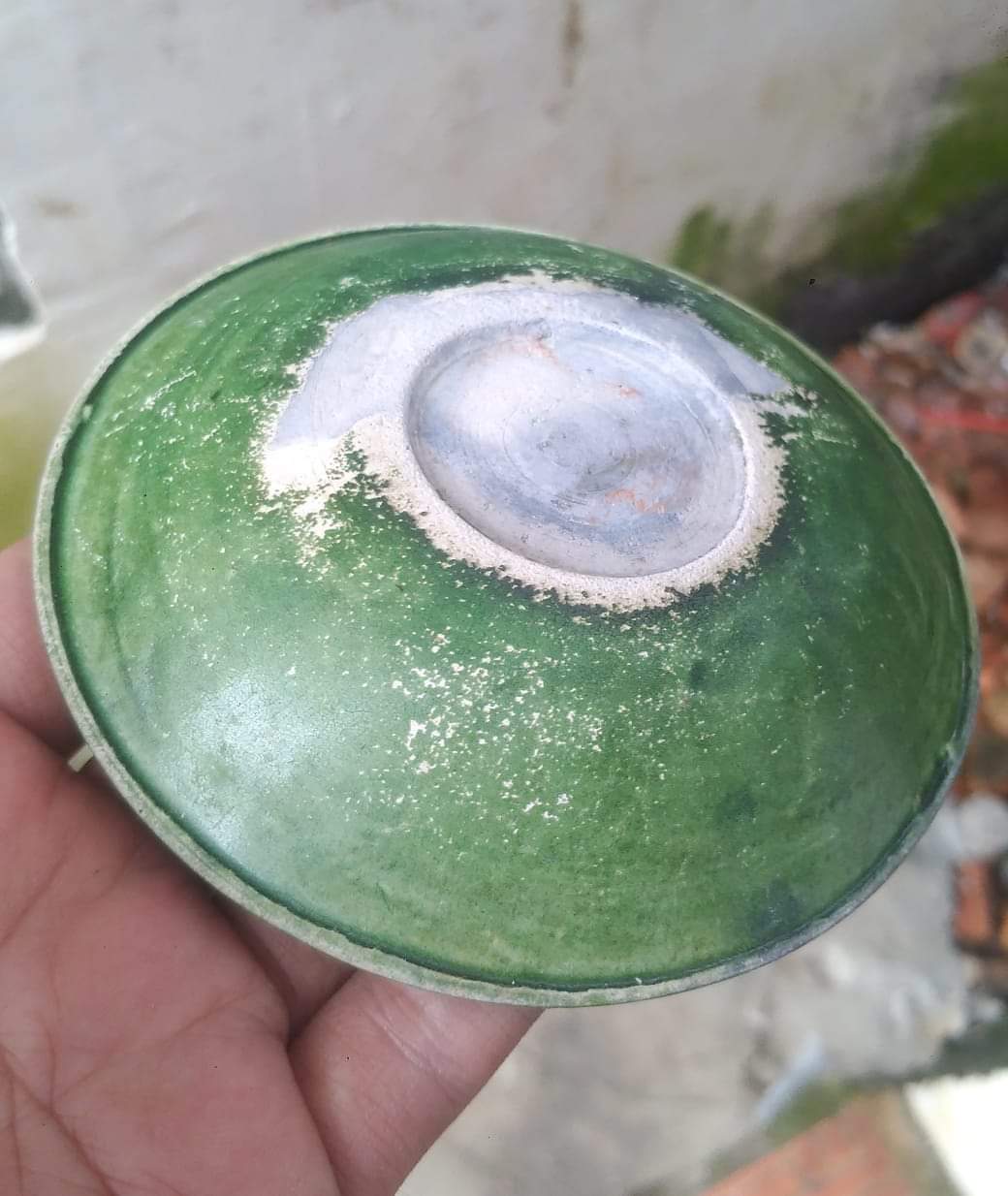 |
| Green glaze dish with moulded floral decoration found in Sumatra Jambi |
Jizhou-type ware with transmutational overglaze effect is also known to be produced by kilns in other provinces such as those in Sichuan Leshan Xiba (乐山西坝) and Guangyuan (广元), Chongqing Tushan (重庆涂山) and Hunan Xiang Xiang kiln (湖南湘乡窑).
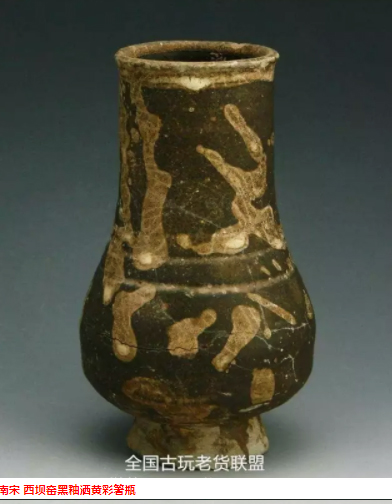 ki
ki
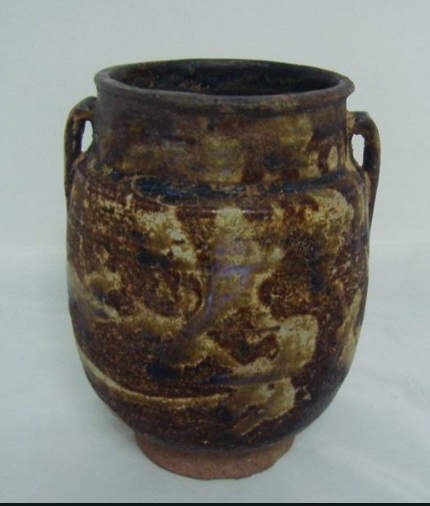
Examples from Sichuan Leshan Xiba kiln
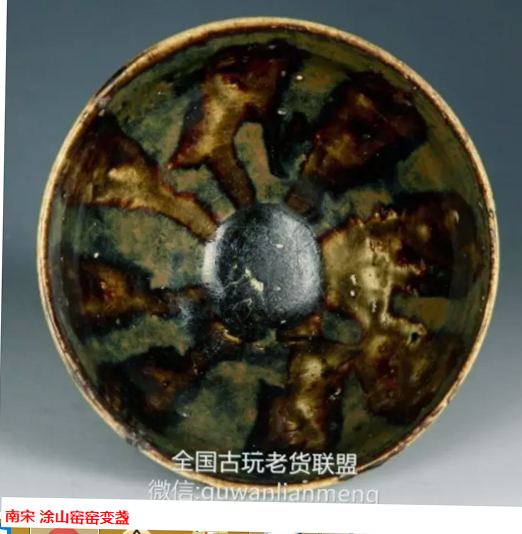
Example from Chongqing Tushan kiln
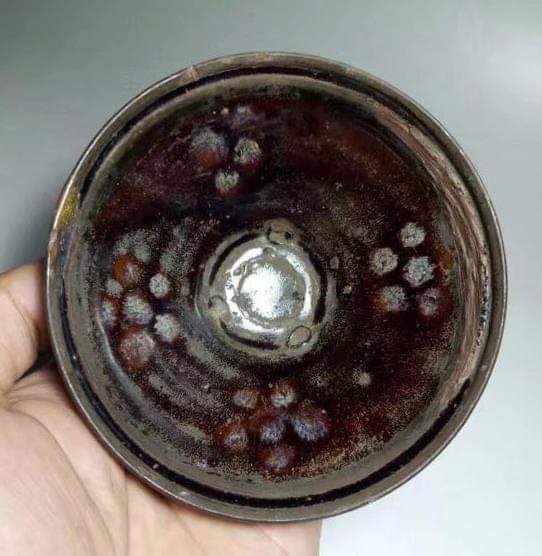 |
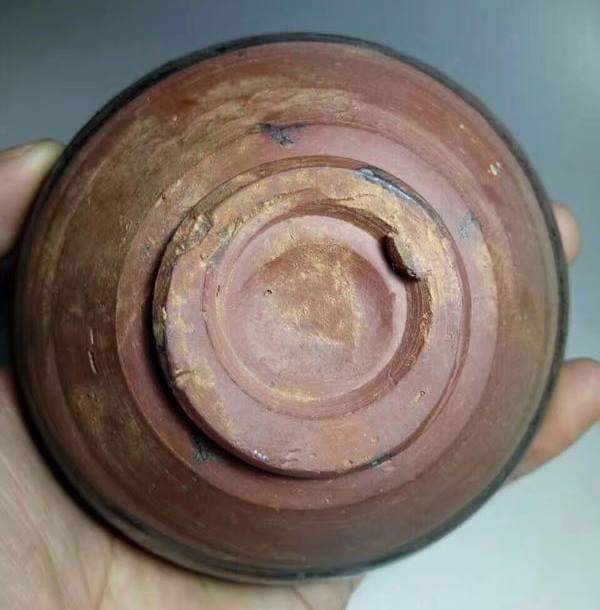 |
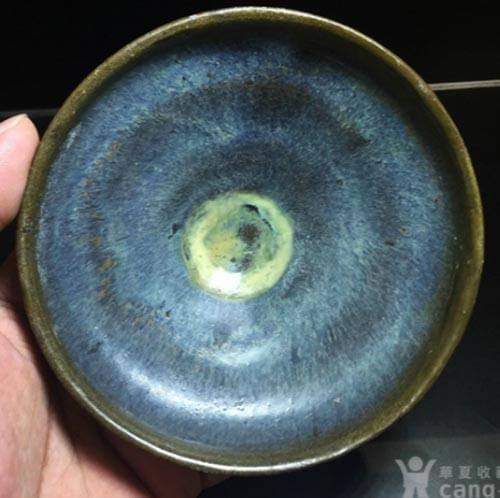 |
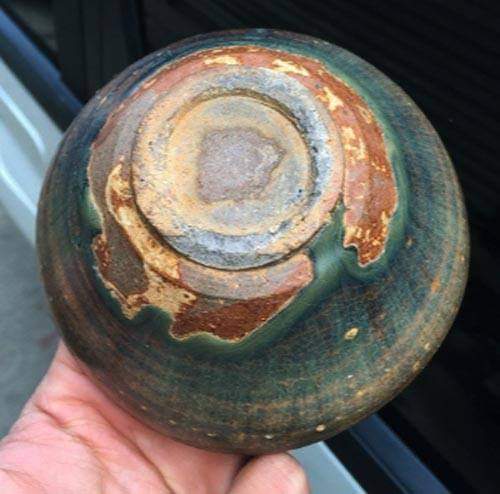 |
| Examples from Hunan Xiang Xiang Kiln |
References:
吉州窑瓷 - 刘阳 赵荣华著
衡州窑与衡山窑 - 周世荣著
Written by: NK Koh (14 Apr 2008), updated: 2/1/2018, updated 17 Feb 2023